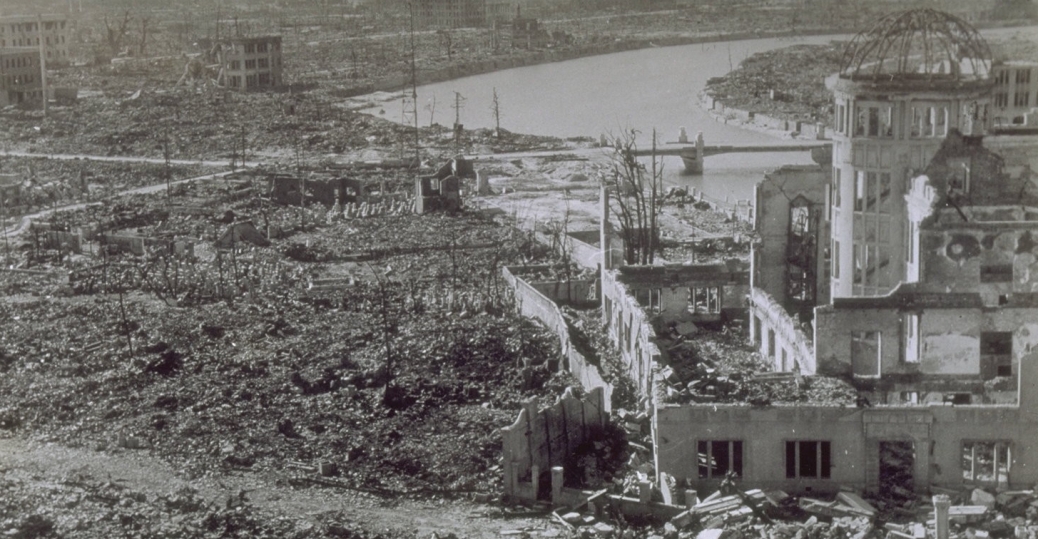A replica of the atomic bomb dropped on Nagasaki, a plutonium-implosion bomb nick-named "Fat Man".

A mushroom cloud from an atomic bomb rises over Nagasaki. The second atomic bomb was dropped on the city of Nagasaki in August, 1945, in the last days of WWII shortly before the surrender of Japan.

March, 1946. Eight months after the atomic bomb was dropped Hiroshima still stands in ruins.

October 5, 1945. Japanese soldiers survey the damage in Nagasaki, two months after the atomic bomb was dropped over the city.

August 13, 1945. The remains of a former elementary school and a dead tree stand in the rubble of Nagasaki a week after the atomic bomb was dropped on the city.

October 5, 1945. Rubble and dead trees are still the dominant features of the Nagasaki landscape two months after the atomic bomb was dropped on the city.

Only the reinforced concrete buildings of the Nagasaki Medical College hospital remain standing after the United States dropped its second atomic bomb on August 9, 1945. The hospital was located 800 meters from ground zero of the atomic bomb
explosion.


March, 1946. Eight months after the atomic bomb was dropped Hiroshima still stands in ruins.

October 5, 1945. Japanese soldiers survey the damage in Nagasaki, two months after the atomic bomb was dropped over the city.

August 13, 1945. The remains of a former elementary school and a dead tree stand in the rubble of Nagasaki a week after the atomic bomb was dropped on the city.

October 5, 1945. Rubble and dead trees are still the dominant features of the Nagasaki landscape two months after the atomic bomb was dropped on the city.

Only the reinforced concrete buildings of the Nagasaki Medical College hospital remain standing after the United States dropped its second atomic bomb on August 9, 1945. The hospital was located 800 meters from ground zero of the atomic bomb
explosion.


No comments:
Post a Comment